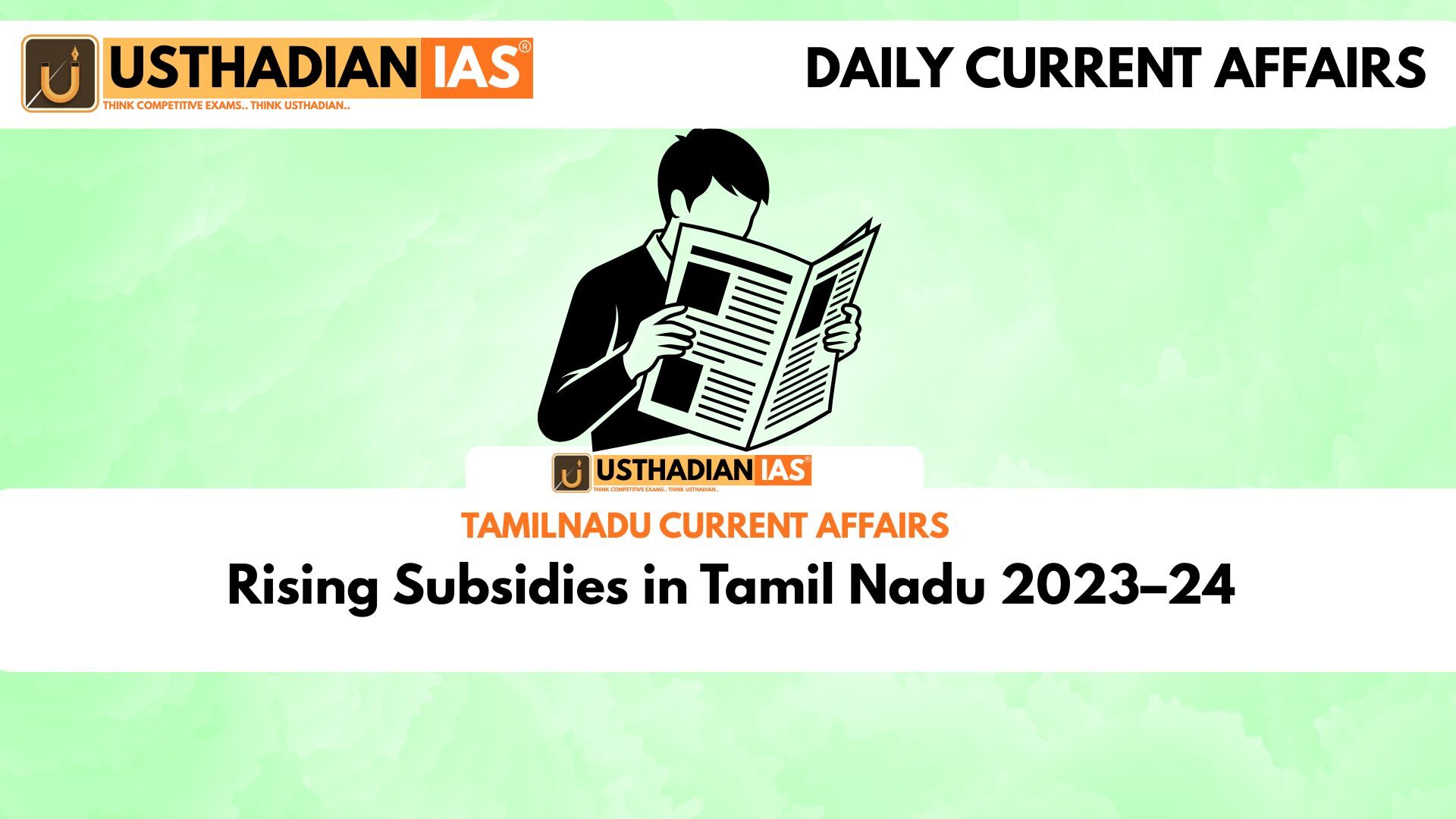Growth of Subsidies
Rising Subsidies in Tamil Nadu 2023–24: Subsidies in Tamil Nadu surged from ₹20,114 crore in 2019–20 to ₹37,749 crore in 2023–24. This represents an annual growth rate of 27%, driven mainly by the launch of the Kalaignar Magalir Urimai Thogai (KMUT) scheme. The KMUT scheme targets women beneficiaries and has become a key driver of state welfare expenditure.
Static GK fact: Tamil Nadu has consistently ranked among the top Indian states in social welfare spending since 2015.
Share in Revenue Receipts and Expenditure
As a proportion of revenue receipts, subsidies increased from 11.54% to 14.27% over five years. Meanwhile, subsidies as a share of revenue expenditure rose from 9.57% to 12.19%, reflecting the state’s priority on social welfare programs.
Static GK Tip: Revenue expenditure includes both committed (salaries, pensions) and non-committed expenditures (welfare schemes).
Non-Committed Expenditure
The proportion of subsidies within non-committed expenditure increased from 35.12% to 38.91%. This indicates that a larger portion of discretionary spending is being allocated to welfare measures. Programs like free bus travel for women and student fare concessions exemplify this trend.
Explicit Subsidies
Explicit subsidies include KMUT, PDS, subsidised domestic electricity, and free bus travel for women. Student fare concessions are another major component. These subsidies are directly measurable and form a significant portion of the state’s financial support to citizens.
Static GK fact: The Public Distribution System (PDS) in Tamil Nadu is one of the most comprehensive in India, covering over 1.2 crore households.
Implicit Subsidies
Implicit subsidies, such as free bicycles for students and subsidised seeds for farmers, cost the state ₹801.77 crore in 2023–24. While not directly accounted for in cash outflows, these subsidies contribute to long-term socio-economic benefits.
Static GK Tip: Implicit subsidies often target specific sectors like agriculture and education to ensure inclusive growth.
Conclusion
The increase in Tamil Nadu’s subsidies reflects a strategic focus on welfare and social equity. Rising allocations to both explicit and implicit subsidies highlight the state’s commitment to improving living standards for women, students, and economically vulnerable groups.
Static Usthadian Current Affairs Table
Rising Subsidies in Tamil Nadu 2023–24:
| Topic | Detail |
| Subsidy Growth 2019–20 to 2023–24 | ₹20,114 crore to ₹37,749 crore |
| Annual Growth Rate | 27% |
| Revenue Receipts Share | 11.54% to 14.27% |
| Revenue Expenditure Share | 9.57% to 12.19% |
| Non-Committed Expenditure Share | 35.12% to 38.91% |
| Major Explicit Subsidies | KMUT, PDS, subsidised domestic electricity, free bus travel, student fare concessions |
| Implicit Subsidies 2023–24 | ₹801.77 crore (free bicycles, subsidised seeds) |
| Focus Areas | Women empowerment, education, energy support, social welfare |








